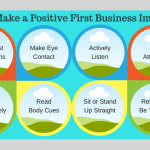

By Mike Zill
The health care industry has never been more exciting or more complicated. We’re seeing a steady stream of amazing new technologies and approaches that improve patient care and enable health care professionals to collaborate more effectively than ever before.
At the same time, health care companies must find ways to deliver more for less, while complying with new laws and regulations governing the confidentiality, security and availability of medical records. To cope with—and thrive in—this new world, BD (Becton, Dickinson and Company) has embraced multiple strategies, one of which is accelerating our enterprise shared services program.
The concept of shared services is not new. For decades many industries have used this idea to improve service delivery and cost.
Essentially, five levers enable shared services to deliver more for less: moving work to lower-cost locations; centralizing work to create efficiency; simplifying and eliminating work; enabling customers to serve themselves; and adding automation to work that can’t be eliminated. Much of the work done in the enterprise can be improved by using one or more of these levers.
Having worked as a CIO, I saw similarities between delivering enterprise shared services and delivering IT services. IT is really just another service organization supporting the enterprise. Over the past 10 years, many leading IT organizations have dramatically improved their cost and value to the enterprise.
A big part of that improvement has been the adoption of the ITIL model and a corresponding service management platform. IT service management brought transparency, meaningful metrics, rigorous playbooks and workflows, and a methodology to manage and improve services.
IT service management offered a mature model that we could use to help solve problems in managing enterprise shared services. Trying to manage any service operation with spreadsheets and email is costly and difficult. That’s why we made the decision to implement IT service management and enterprise service management using ServiceNow.
In the past, we used a combination of group mailboxes and Lotus Notes to manage our services. When a request arrived at a group mailbox, several people could respond to the same request—duplicating efforts and creating confusion.
Work requests were manually typed and tracked in Lotus Notes or Excel. There was no automation or real-time visibility, and nothing was easy. As a result, service delivery was inconsistent and error-prone. We also wasted time getting to an agreed version of the truth regarding the quality and timeliness of our service delivery.
Our first job was moving our shared services work from group email to managed and measured services. Today, we have much better process visibility and case management across our service teams, enabling us to better manage and measure the services we deliver.
Driving Adoption and User Satisfaction
Our enterprise shared service seeks to deliver a simpler, more consistent way for our associates and customers to find and use services. The platform also helps us optimize our end-to-end service delivery. Why is this important? Organizations have traditionally managed work in functional silos, whereby each function does its part of the process and passes the ball to the next function.
Associate onboarding is a great example. Even a simple onboarding requires the hiring manager, human resources, benefits, finance, IT, facilities and more.
Imagine if this were orchestrated via a service portal that connects the independent steps and teams into a single workflow and shows both the manager and the new employee the progress of each team’s actions in real time. The same system would also record all the cycle time and quality metrics for later follow-up and continuous improvement.
Our aim is to digitize and connect the work silos across the company so we can offer our customers and associates a consistent, end-to-end experience. Enterprise services must be complete, easy-to-use, searchable and fully transparent, just the way they are in the consumer world.
At BD, we also see huge potential in combining our service management with robotic process automation (RPA) tools. In fact, we’ve already started using bots in a number of locations. RPA tools make it easy to connect systems and processes rapidly without writing complex code.
Simple tasks such as filling in forms, moving files and folders, and copying and pasting data are all easy to automate. By integrating RPA with end-to-end service management workflows, we’ll be able to automate many steps in our global processes. Our service improvement team can implement many of these small automation steps themselves, reducing our IT organization’s backlog and allowing them to focus on larger, more complex work.
These are just some of the ways our global shared services team is contributing to BD’s mission of advancing the world of health.
Mike Zill is senior vice president of global shared services and business processes at BD (Becton, Dickinson and Company), a global medical technology company with more than $10 billion in annual revenue.
[source;baselinemag]




